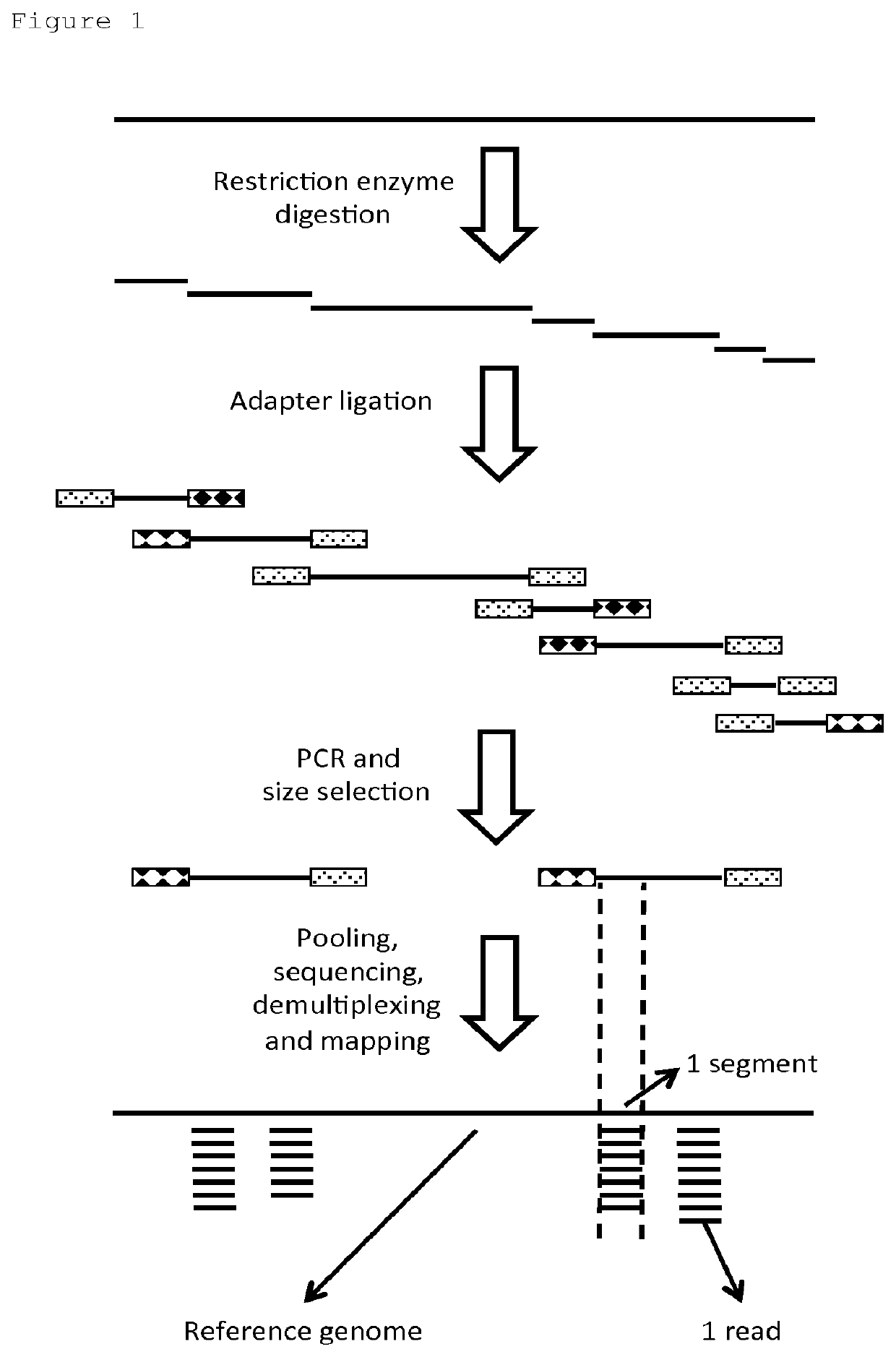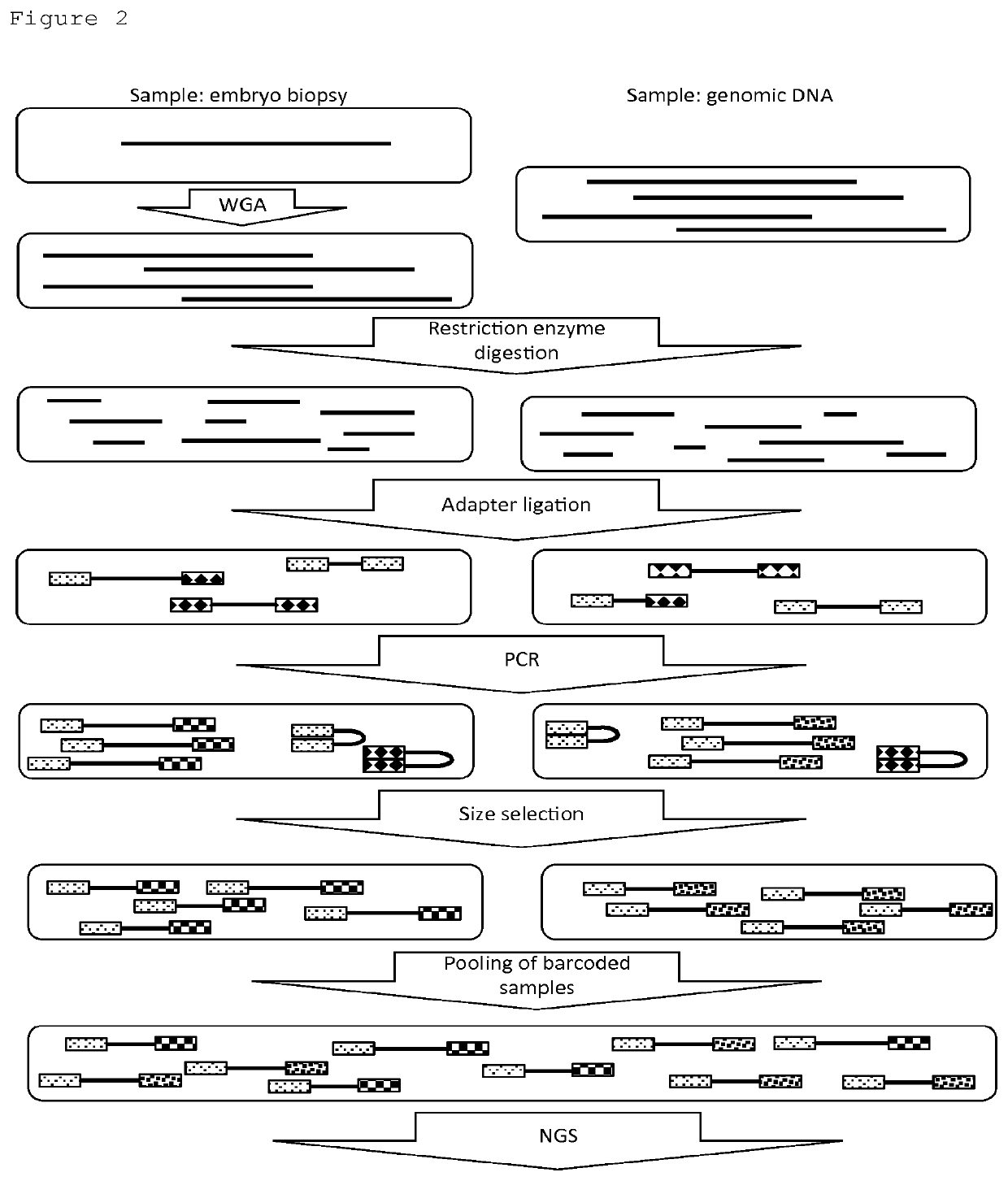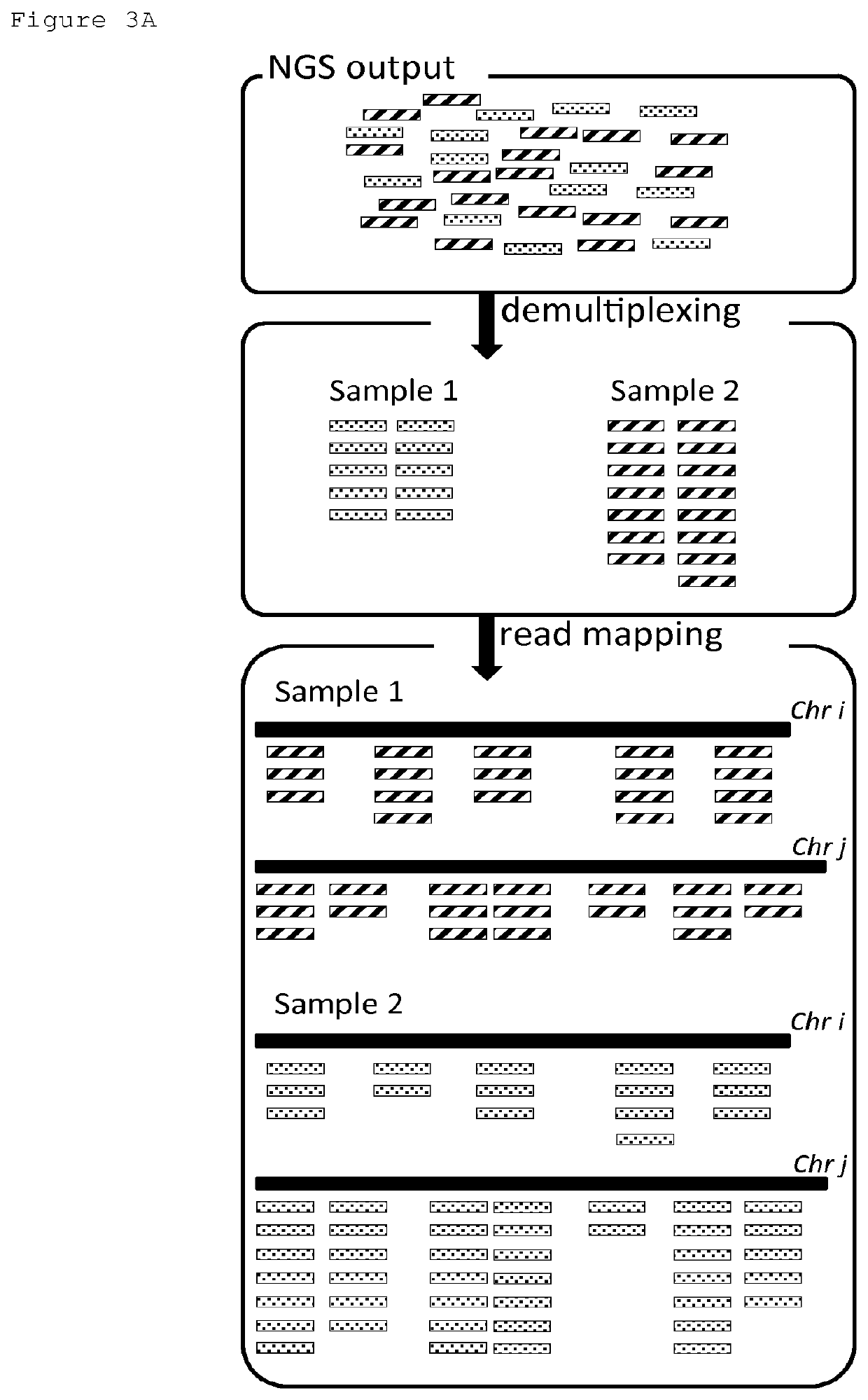Genetic analysis method
a gene analysis and data analysis technology, applied in the field of dna analysis, can solve the problems of large amount of data generated by ngs platforms, difficult and time-consuming genome assembly, and statistical inference problems of whole genome data processing and variant calling from ngs, and achieve the effect of increasing computational and storage efficiency and easy and quick interpretation
- Summary
- Abstract
- Description
- Claims
- Application Information
AI Technical Summary
Benefits of technology
Problems solved by technology
Method used
Image
Examples
example 1
ration, NGS and Sequence Mapping
[0184]WGA was applied on the embryo biopsy DNA using MDA. The MDA enzyme has proofreading activity, but due to the fact that there are only a few copies (i.e. 1 or 2 for a single blastomere) of the genome, there is a high chance for e.g. Allele Drop Out (ADO) randomly across the genome. Likewise there is a chance for e.g. Allele Drop In (ADI) across the genome.
[0185]Double restriction enzyme digestion was applied on the amplified genome to generate fragments with identical and different palindromic parts of the restriction enzyme recognition site recognition sites at each side. RE-specific adaptors were ligated to the fragments, to generate fragments with identical and different adaptors at each side. PCR was applied to preferentially amplify fragments with different adaptors on each side, as this is preferred for optimal use of the NGS capacity. The PCR requires only 2 primers. As the number of primers is very small, this greatly facilitates Quality ...
example 2
cs Characterizing the Segments
[0187]For each segment of the reduced representation library, the NGS data are integrated into a summarizing dataset. This dataset contains positional information of the segment, base frequency, 4-base frequency, read count, normalized read count, ancestral probability, quality score for mapping, quality score for base-calling, and / or any metric derived thereof. These metrics are used for clustering non-overlapping, nearby segments with similar raw metrics to provide master segments. These master segments are characterized by metrics derived from the raw metrics.
example 3
for Subchromosomal CNVs in a Preimplantation Embryo in Less than 24 h
[0188]In certain cases it is important to screen the DNA of a preimplantation embryo for subchromosomal CNVs and to have the diagnostic result available in less than 24 h to enable transfer of the embryo within the same cycle. In such case, the next steps are set out below.
[0189]For every segment, the number of reads is counted. The number of reads is corrected according to the positional information of that segment: using a historical dataset on “normal” samples, the systematic artifacts introduced by e.g. WGA, PGA and / or NGS on the read count of every segment can be identified and corrected for. Corrected read count provides important information to identify regions with CNVs (which will have a deviating read count as compared to “normal” regions). However, a definitive call for a CNV should not be made based on 1 segment alone, as the result in that 1 segment may be perturbed by an artifact. Read count is indepe...
PUM
| Property | Measurement | Unit |
|---|---|---|
| base frequencies | aaaaa | aaaaa |
| frequency | aaaaa | aaaaa |
| size | aaaaa | aaaaa |
Abstract
Description
Claims
Application Information
 Login to View More
Login to View More - R&D
- Intellectual Property
- Life Sciences
- Materials
- Tech Scout
- Unparalleled Data Quality
- Higher Quality Content
- 60% Fewer Hallucinations
Browse by: Latest US Patents, China's latest patents, Technical Efficacy Thesaurus, Application Domain, Technology Topic, Popular Technical Reports.
© 2025 PatSnap. All rights reserved.Legal|Privacy policy|Modern Slavery Act Transparency Statement|Sitemap|About US| Contact US: help@patsnap.com



